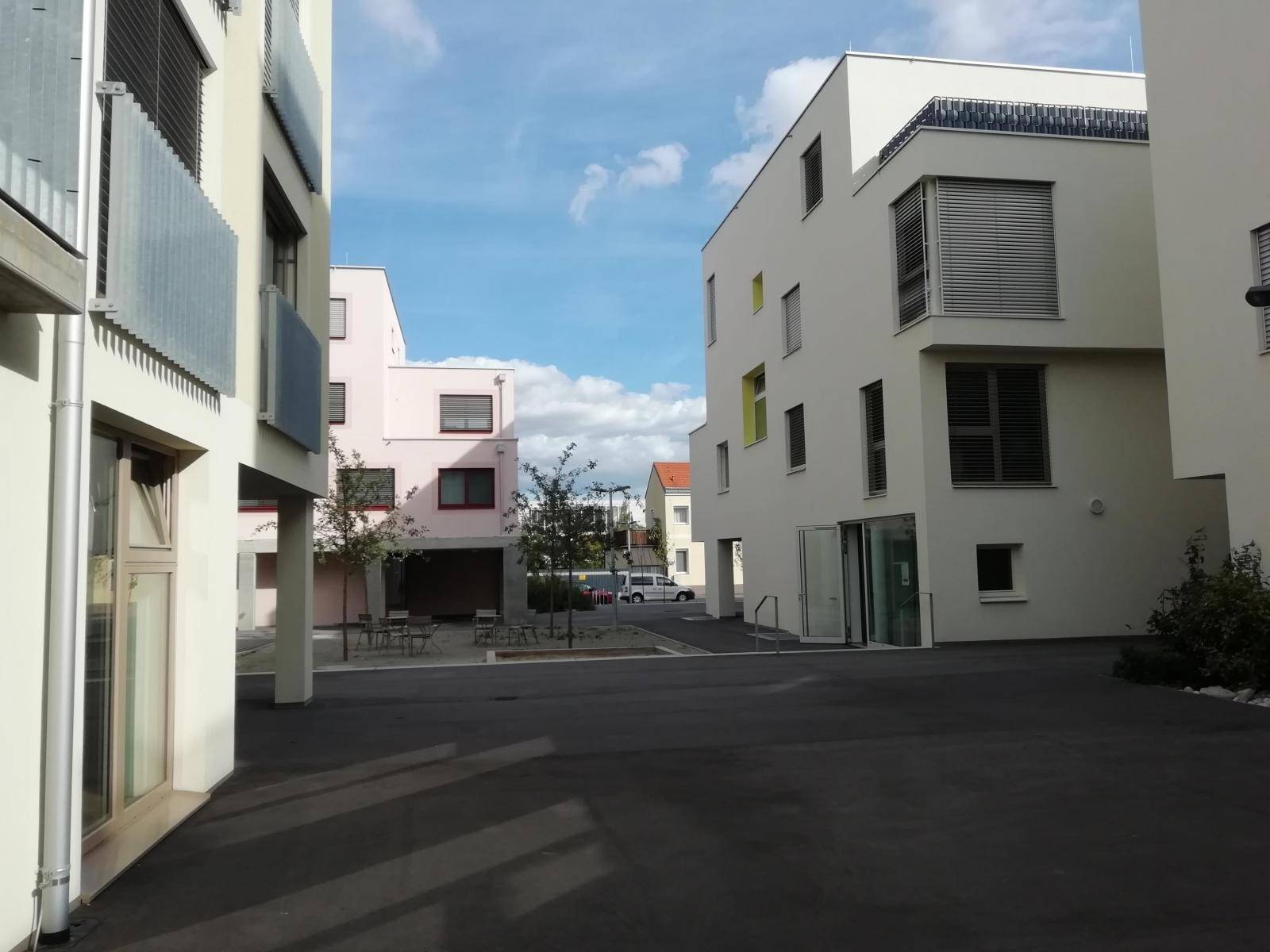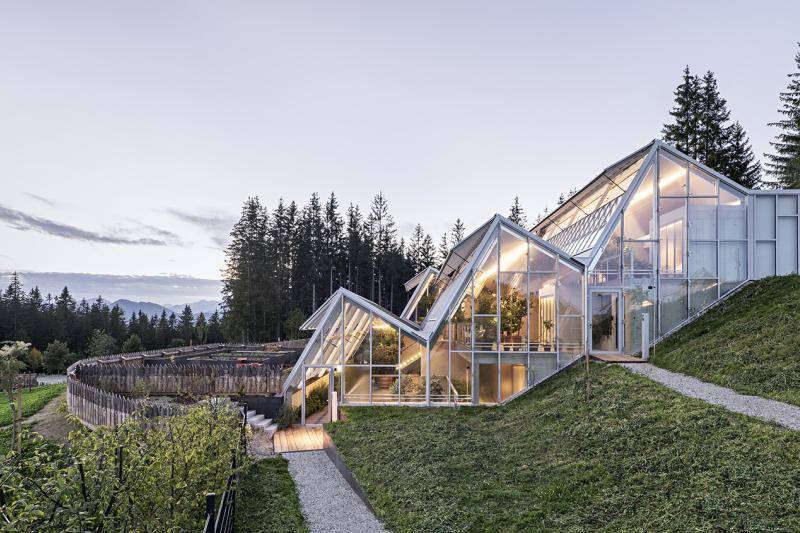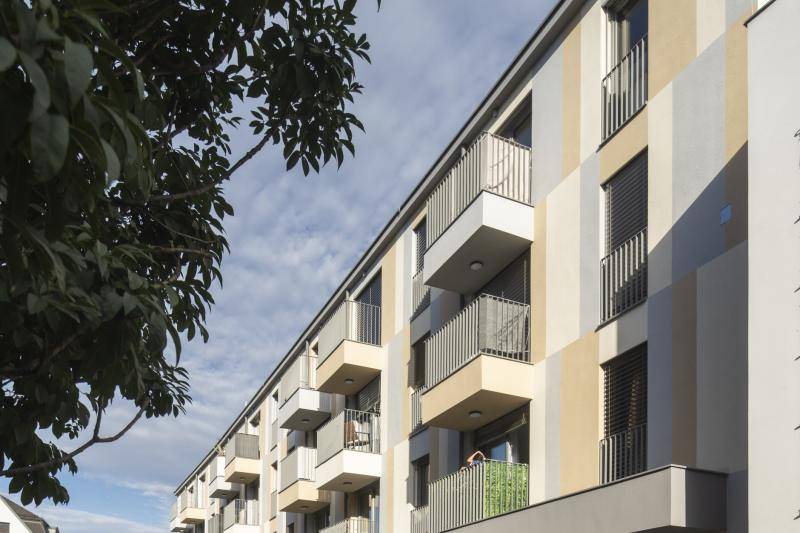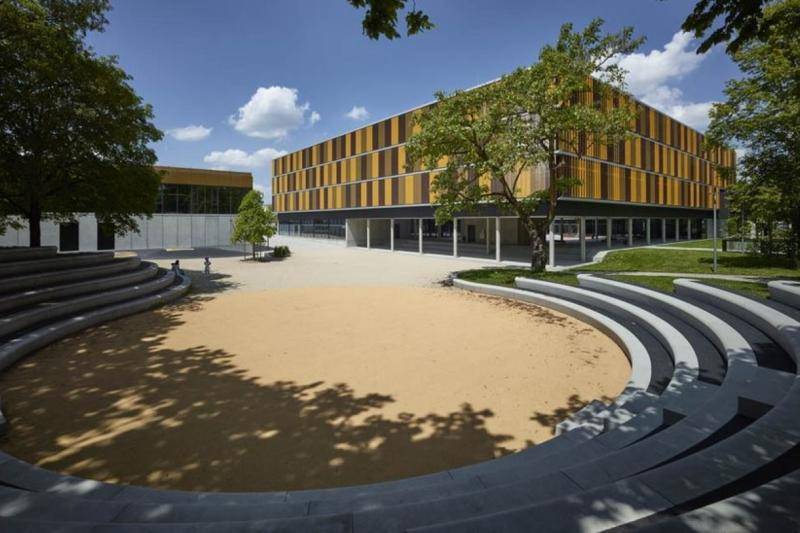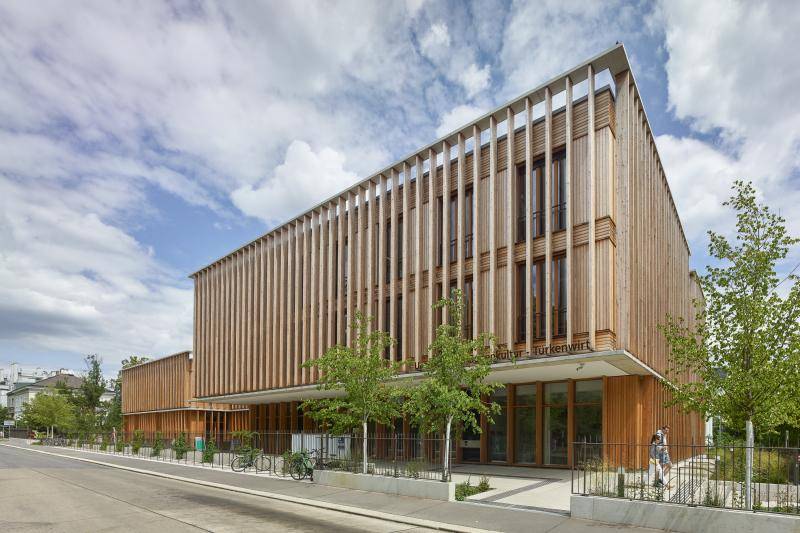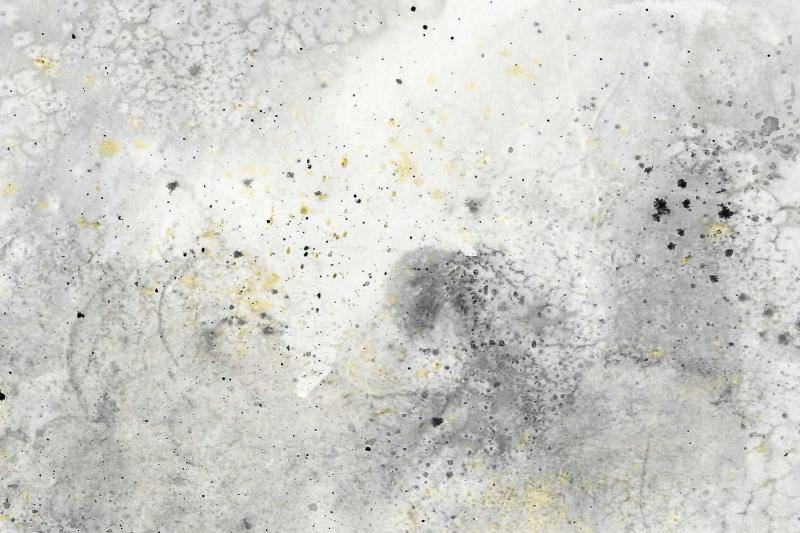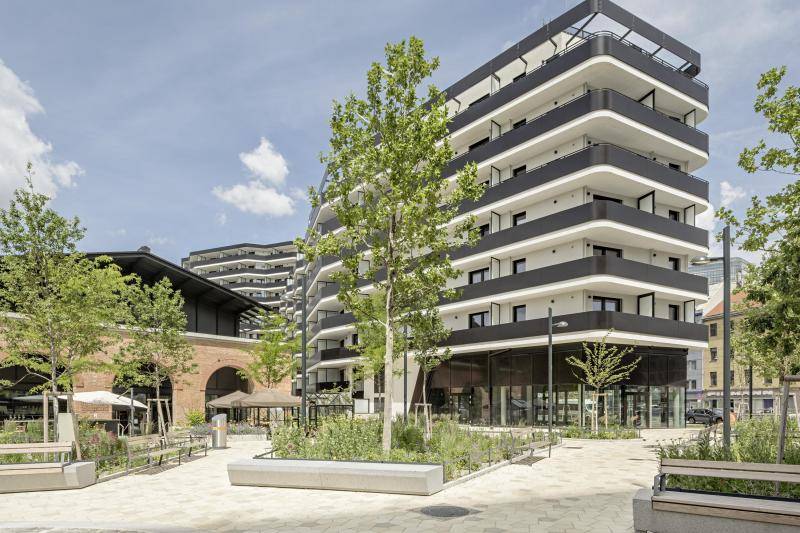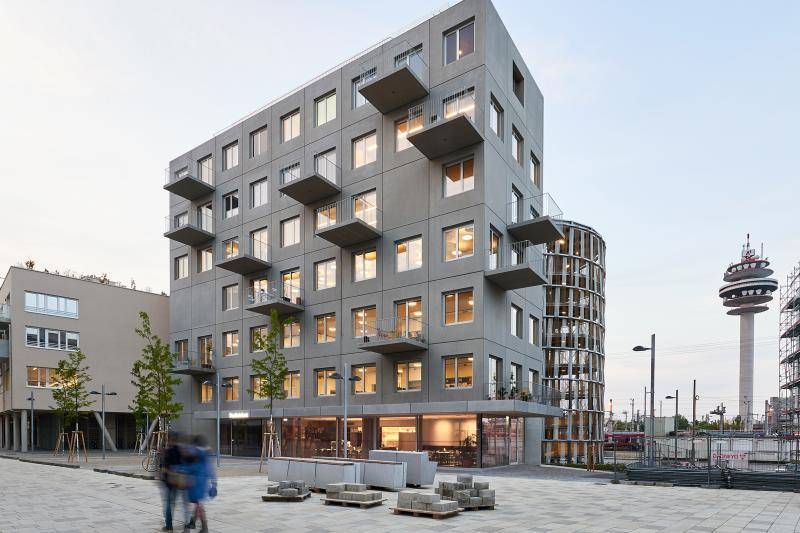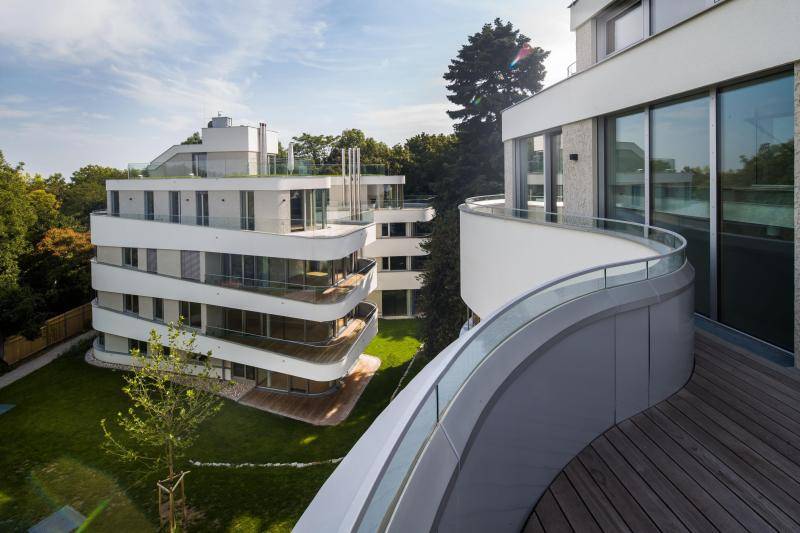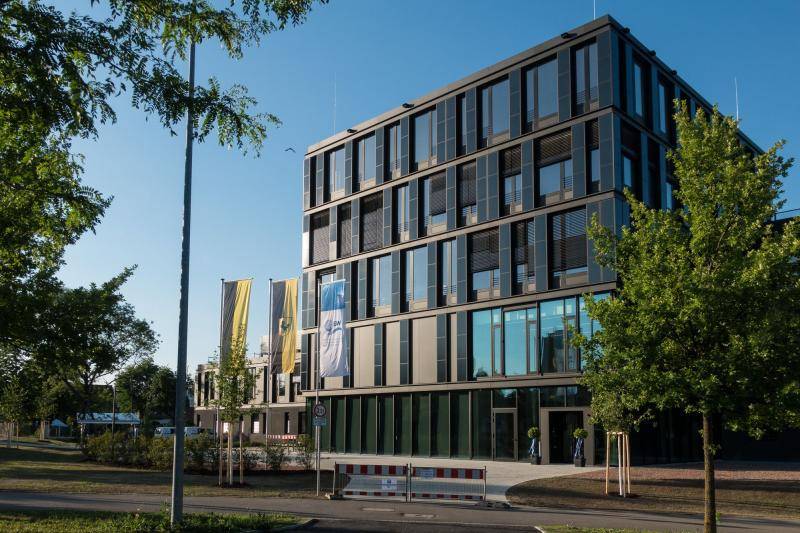MGG22
In the MGG 22 project, the combination of 100% renewable energy (of which more than 80% is wind surplus electricity), geothermal energy (deep probes) and thermal component activation for heating and cooling in social housing was implemented for the first time worldwide.
Neues Leben, Wien und M2plus Immobilien GmbH, Salzburg
2019
Sophie und Peter Thalbauer; Thaler Thaler Architekten; Architekt Alfred Charamza Thaler Thaler Architekten Ziviltechniker GmbH
Porr AG
Client: M2plus Immobilien, Neues Leben Structural engineering: Buschina Partner Landscape architecture: rajek barosch landschaftsarchitektur (Isolde Rajek, Oliver Barosch) Building services: FIN Future is Now (Harald Kuster, Andrea Kuster) Social sustainability
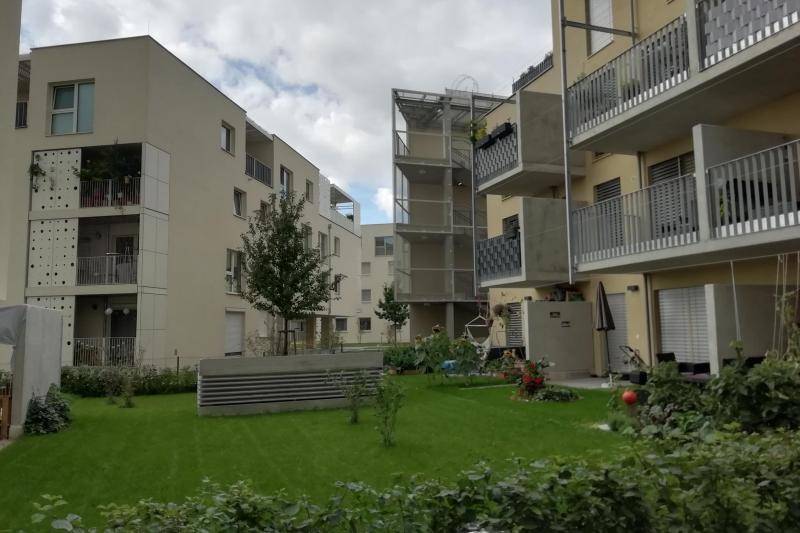
By using the false ceilings as long-term storage, the heating load can be significantly redimensioned (from 840 kw to 300 kw), contrary to all applicable standard calculation procedures. This allows a more even use of the brine-water heat pump and a better utilization of the wind surplus energy. The deep probes allow passive cooling in summer with simultaneous regeneration of the ground and partial seasonal storage.
A sequence of alleys, paths and squares form the framework for the urban fabric and create meeting places for the residents. The open space planning followed the concept of the "edible city", fruit trees, herbs and berries are constant companions in the settlement. A large-scale vegetable garden could be implemented in the adjacent meadow. Interior walls are mainly non-load-bearing and thus flexible, most of the apartments have two- or three-sided lighting, and all have loggias, balconies or terraces. All 160 units are rental apartments.
